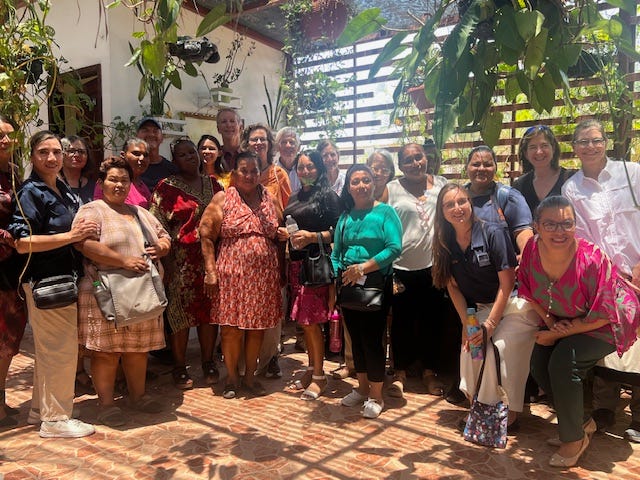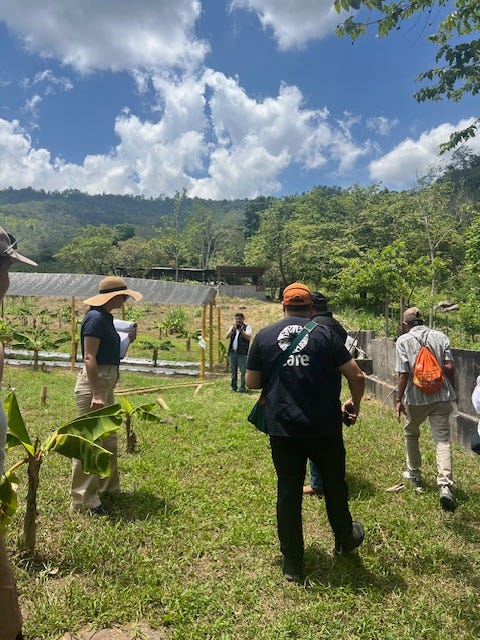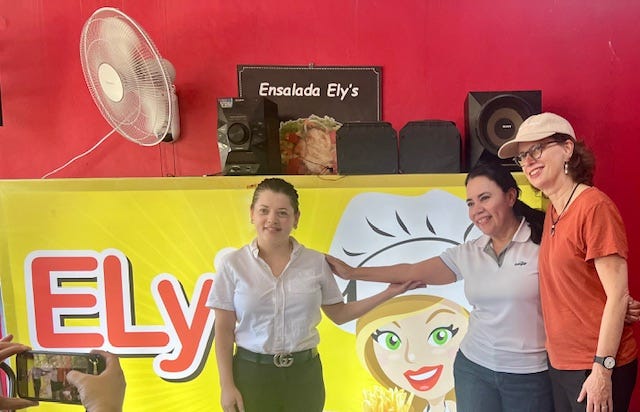Devastation & Destruction or Resilience, Reimagining and Rebuilding?
The young woman next to me sat silently at the table for the first hour of presentations and discussion. She was younger than the other women, with long dark hair, frailer than the more robust women around the table. Her slender fingers touched tentatively the papers in front of her.
I was in Honduras with CARE, the humanitarian and development non-governmental organization (NGO) which has worked in Honduras for 70 years.

The women at the table were sharing their stories of the violence they had suffered and the way they came back from the brink, a precipice that caused several of them, including the woman next to me, to contemplate suicide. The only other possibility they saw to survive was to migrate to a safer place like the United States. Most had children and had resigned to taking their children with them. The violence against them was domestic and also from the gangs that surrounded their community. Police told them they couldn’t get help when they were threatened, only when they were actually harmed, and even then, very few perpetrators were prosecuted. Impunity prevailed. Doctors told them not to clear away the blood from their faces when they were beaten; otherwise, they had no evidence.
They didn’t want to leave. Honduras was their country and home, but alone, they didn’t know how they could survive. Honduras has one of the highest murder rates against women in the world. Several concluded if they didn’t leave, they would be killed and so they left with their children. But the escape was equally dangerous. Several had been raped again or kidnapped, and some of their children were also abused or died on the journey.
Finally, the woman beside me spoke up. She was 29 though looked younger. She had a 6-year-old son and was one of these women described. She appeared frail, but as she recounted her attempt to find safety and a life for herself and her son, her quiet voice gained confidence and volume. By the end of the story of her perilous journey and her progress, many of us listening thought she could run for community office because of her courage and quiet charisma, though of course politics could be a perilous journey of another kind.
Like many of the women around the table, she found a safer place, developed a business of her own and some protection and resources for herself and her son. This came from the community of women in a Women’s Network, aided significantly by funds from the U.S. government—USAID—with CARE and the local organization CASM developing and implementing the “Women Weaving Free Lives from Violence” program that serves 112 communities and approximately 32,000 people.
However, the recent shutting down of U.S. foreign assistance with the large reduction of USAID, has meant this program has had to cut back significantly, and other programs have had to shut down entirely. CARE through its own Triage Fund continues to work with these communities but on a much more limited basis. “Seeding Hope,” a program offering leadership training, small business support and safe spaces for at risk youth who have faced violence, displacement and also uprooting because of hurricanes has been canceled entirely.
Many of the women in this region have worked in textile factories making clothes and items which ship back to the U.S., including MAGA caps and swag. But many of these factories have now closed.
A program “Nourishing the Future” has worked for years with small-scale farmers through Farmer Field and Business Schools equipping farmers with training in the best agricultural and business practices. With this training farmers have significantly increased their income and also been able to practice “climate-smart” agriculture such as using a biodigester apparatus that transforms animal waste into useable fuel and saves on burning firewood. The programs have also been supported by the Cargill Foundation so can continue but have had to reduce in size.

These programs with farmers and with women have enabled community-led savings groups (VSLAs) which provide access to some capital and increase the income and stability for communities which in the past could not get credit.
“If you don’t get trained, you don’t get out of poverty,” said one farmer.
“Education gives us an opportunity to have a better life,” added another.
“We needed a way to make a living,” said one woman.
“We needed entrepreneurship workshops,” added another.
“You can’t do things by yourself; you need someone to walk with you.”
On returning from Honduras, I am left with the voices of the women and youth and farmers whom we met, with Ely who started a small food stand with $40 and after training now has a popular restaurant where we had lunch and where her supportive husband works for her. All express appreciation for assistance received and have a determination to take what they have learned forward and share it with their communities. But they also express a deep regret that the United States government can no longer be counted on as a robust partner in the development of their country whose GDP per citizen in 2024 was $3446. The 2024 per capita GDP for U.S. citizens was $85,784.
